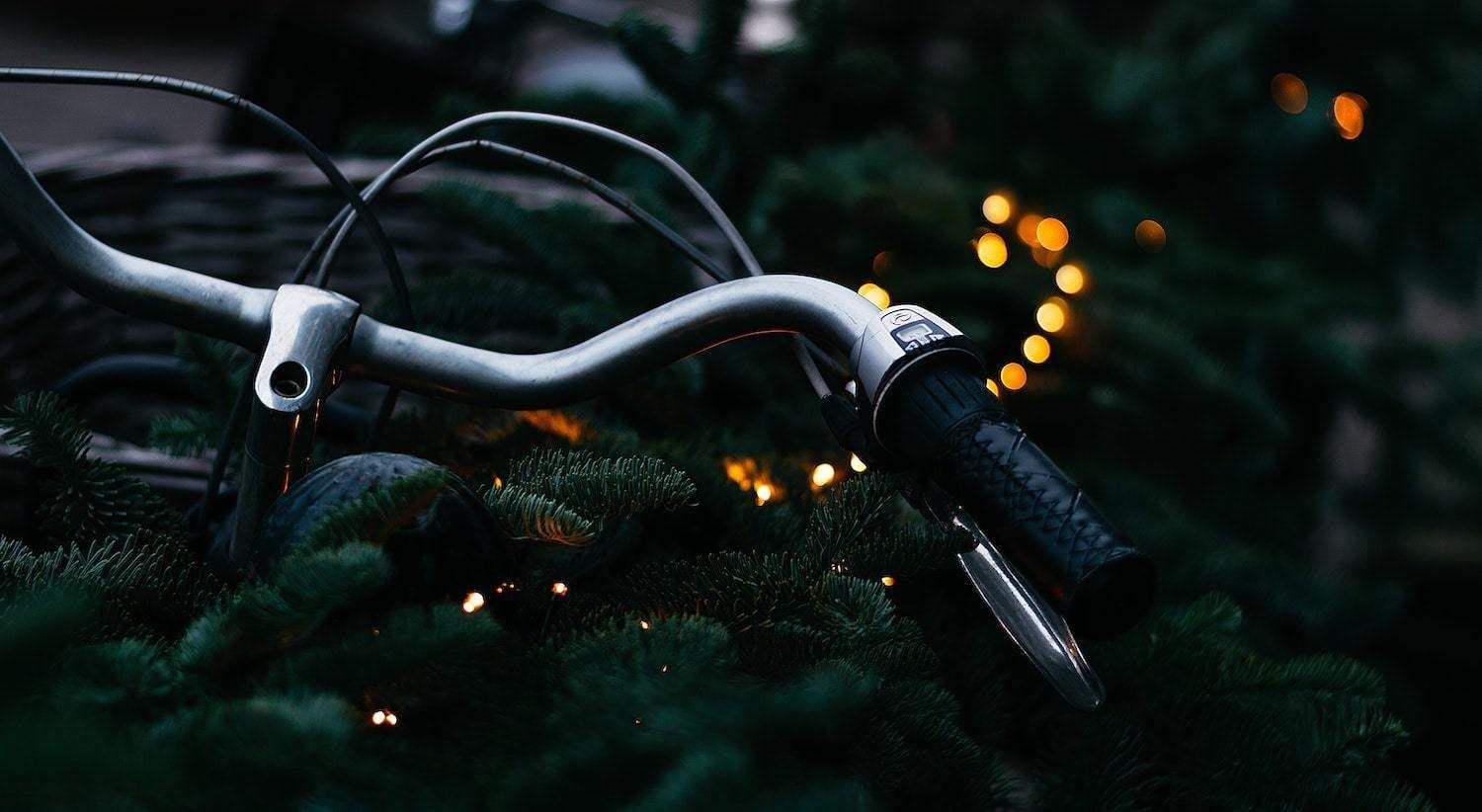In this article, we explore what distinguishes one type of bike helmet from another, the main features to look for in a bike helmet, how to determine its size, how to properly maintain it, and when to replace it. We’ll also discuss MIPS technology in some helmets, and national safety standards. Cyclists of all levels will benefit from this practical guide.
WHAT TYPE OF BICYCLE HELMET?
There are two main categories of bike helmets: road helmets Vs. mountain bike helmets. Generally speaking, they consist of a thin outer shell, a thick layer of expanded polystyrene foam (EPS foam) and chin strap to hold the helmet in place. The function of the foam inside the helmet is to compress and break down on impact to absorb the shock and distribute the force—away from your skull.
In addition to these two disciplines, there are also some sub-categories such as urban helmets and children’s helmets.
ROAD BIKE HELMETS
The best road helmets are obviously safe when it comes to protecting you from a crash, but they also offer ventilation and aerodynamic properties. They are as light as possible, and their fit optimizes your comfort.
In recent years, road helmets have split into two specialized categories, much like frames and wheels, to meet specific needs: aerodynamic helmets and climbing helmets.
The design of the former is aimed at eliminating as much friction as possible to ride as fast as possible on the flat. The latter offer increased ventilation and reduced weight for optimal comfort during performance. Take the time to carefully consider which option best suits your sport of choice.

MOUNTAIN BIKE HELMETS
Mountain biking is more risky and, in the event of a fall, you’ll be glad you took the time to make the right mountain bike helmet choice. This is particularly true for brazen downhill mountain bikers!
The best mountain bikers’ helmets aim to provide the most comprehensive coverage possible. This is because impacts can result from a fall, a collision with an obstacle, or even just a low-hanging branch you failed to notice. In many cases, mountain bike helmets will also include a visor to protect your precious face.
Helmet sizing is an important facet of mountain bike helmets. For safety as well as comfort, you’ll want to make sure the bike helmet fit is absolutely perfect.

URBAN BIKE HELMETS
Cycling is not just a fun way to stay in shape—it’s an efficient means of transportation that has the power to positively transform your daily life. So, what should you look for when choosing a city bike helmet?
Well, in contrast to downhill mountain biking helmets, we can put aerodynamics and performance aside. Instead, we want to optimize comfort, safety, and yes—even style. After all, we’re talking about choosing a helmet that will be part of your everyday look for half the year!
In addition to comfort, a hard outer shell, and a snug fit, it’s worth considering options that boast good visibility. This will help you keep track of pedestrians, vehicles, and other cyclists bustling around you.

CHILDREN’S HELMETS
In addition to being attractive colored and patterned, kids helmets boast a few key differences to their adult counterparts. Not only are helmets for kids smaller, they’re designed to properly contour the unique head shape of children.
When choosing a child’s helmet, it is important to find a model that fits the child’s head properly. The helmet should fit snugly, but not too tightly, and should sit flat on the child’s head without tipping or sliding. EPS foam in-mold bike helmets with a hard outer shell are a great option.
ELECTRIC BICYCLE HELMETS
Electrically assisted bicycles are becoming increasingly popular, and for good reason. For one thing, E-bikes allow you to carry more weight, including groceries and children. For another, they let you get to work faster and arrive less sweaty. But is there anything special to note about e-bike helmets?
Not really, actually. Regular bike helmets are more than enough to protect the electrified cyclist. In fact, due to the higher speeds attained on an e-bike, a high-quality helmet is arguably more important, especially for a less experienced casual rider.
Shop bike helmets
KEY FEATURES TO LOOK FOR WHEN CHOOSING A BIKE HELMET
There are many factors to consider when choosing a helmet, starting with the daunting standards and certifications (CPSC, ASTM, MIPS, etc.), which we will demystify here. You’ll want to pay attention to bike helmet fit and comfort, good ventilation and breathability, maximum protection, and a sun-shielding visor.
SAFETY STANDARDS, CERTIFICATIONS, AND TECHNOLOGIES
The acronyms CPSC (Consumer Product Safety Commission) and ASTM (American Society for Testing and Materials) represent the entities responsible for certifying that bicycle helmets meet satisfactory safety requirements.
In Canada, the standard in place is CSA (Canadian Standards Association). While all bike helmets sold in the U.S. must be certified, Canadian legislation does not require manufacturers to comply with CSA requirements.
You’ll therefore want to make sure that the helmet you choose is approved by the American CPSC, which has become the reference for bicycle helmet certification in Canada, as well.
The most talked about designation in recent years is MIPS technology, which stands for Multi-Directional Impact Protection System. Its main function is to reduce the rotational forces and rotational energy caused by certain impacts to the helmet shell.
This sophisticated impact protection system was developed by brain surgeons and scientists, and has proven to be effective in reducing brain damage caused by blunt-force impacts to the head—forces strongly correlated with the risk of a concussion.
A new bike helmet without this technology is still safe, but wearing a helmet with MIPS technology will have a drastic and positive effect on safety performance. And it’s no longer just reserved for high-end helmets; MIPS is now a standard part of most bike helmet construction, making it accessible to every type of rider.
FIT AND COMFORT
When it comes to choosing a bike helmet, your top priority is that it fits properly. Beyond the comfort and safety aspects, the way a helmet fits will help you choose the right size bike helmet. Luckily, bike helmet fit systems have come a long way. Here are a few tips to sizing up.
- Step 1 – First, there are the removable pads inside the helmet. These removable pads are used to customize the fit of the helmet and provide ample protection against impacts. They are usually VELCRO, allowing you to adjust them to your needs or swap them out for thicker or thinner varieties.
- Step 2 – Now it’s on to the helmet chin strap. Make sure it’s not twisted, and that it fits in the right place in the internal structure of the helmet, as indicated by the manufacturer. A chin strap buckled should feel snug but not tight.
- Step 3 – Time to adjust the helmet’s head size, using the adjustment wheel knob on the rear of the headband. The adjustment wheel is also sometimes found on top of the helmet at the back. The headband should be tight enough that the helmet does not fall off the head when you lean forward with the straps untied.
- Step 4 – We are now ready to adjust the straps of the bike helmet. These are adjusted under the ears, so that they sit as flat as possible along the face. Then, adjust under the chin. The straps don’t have to be very tight, as the helmet should be held in place by the headband. As a test, insert two fingers easily between your chin and the straps.
- Step 5 – Finally, it’s important to make sure that the bike helmet sits straight on the head: not too far forward, not too far back, and not leaning to one side or the other. In addition to a visual check in a mirror, you should also verify that there’s only a finger’s width of space between the eyebrows and the tip of the bike helmet.
VENTILATION AND BREATHABILITY
A helmet design with more openings allows for better airflow and breathability on your head. While this ensures optimal comfort, it comes at the cost of aerodynamics.
The best designed bike helmets will offer a balance between these two factors. Keep in mind, however, that the sacrifice in performance is minimal and will not affect the vast majority of cyclists, who are better off with a more ventilated and comfortable helmet. Therefore, for the casual rider, a good bike helmet features ventilation over aerodynamics.
BIKE HELMET VISORS
A visor protects your face and eyes from both the sun’s rays and from pouring rain. Visors are almost always found on a mountain bike helmet, as they protect your face from branches, leaves, and other debris that may be on the trail.
Keep in mind that not all visors are interchangeable or removable.
THE MOST POPULAR BIKE HELMET BRANDS
To help guide your search, here’s a list of the best-known and most trusted helmet brands on the market:
- Giro, Smith Optics, POC and Garneau all offer popular, high-performance road and mountain helmets;
- Bern and Lumos offer style and visibility in urban environments;
- Leatt and Troy Lee Designs are highly prized among pure mountain bike specialists.
HOW TO MEASURE YOUR HEAD TO CHOOSE THE RIGHT HELMET SIZE
Using a soft measuring tape, measure the circumference of your head, circling 2.5 centimeters (~1”) above the eyebrows in the front, and directly over the bump behind the skull in the back.
If you don’t have a flexible tape measure, you can use a piece of string and then use your finger to measure it flat.
WHEN TO REPLACE YOUR HELMET?
Unequivocally and always after a fall. All hard shell bike helmets should be replaced immediately after the first significant impact, as its protection is likely to be compromised even in the absence of noticeable damage; it may not be visible, but it is just as real.
Second, although the existence of an expiration date for a new helmet that has never been impacted is disputed, manufacturers generally recommend replacing a helmet after three to five years of use. This is based on the idea that weather, heat, cold, and sweat will have worn down its material composition.
BICYCLE HELMET MAINTENANCE
Bike helmet care is very simple. First, clean it with water and a small amount of mild soap. Never use harsh cleaning products such as bleach, as it could damage the materials that make the helmet safe.
Next, make sure to store your helmet in a cool, dry place. Avoid exposing it to excessive heat; for example, by leaving it in the trunk of your car, as this could also affect its ability to properly absorb shocks.
CONCLUSION
Choosing helmets should be fun! There are so many great options and styles to choose from. Whether it’s for road biking, mountain biking, or getting around town on your old bike or a new e-bike, you’re sure to find a helmet that perfectly fits your lifestyle at Altitude Sports!
Follow the tips we’ve put together in this article, and you’ll feel safer, more comfortable, and more aerodynamic every time you put rubber to road. Whether it’s a high-end BMX riding helmet, a road helmet, a helmet with MIPS technology, or any other type of helmet, most helmets today conform to national safety standards.
So no matter what type of rider you are, or what level of experience you have—it’s time to Make Helmets Great Again!






